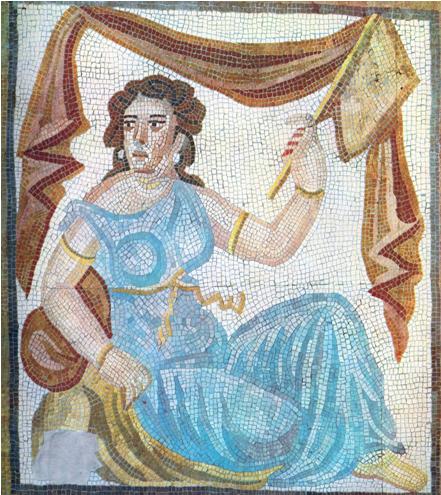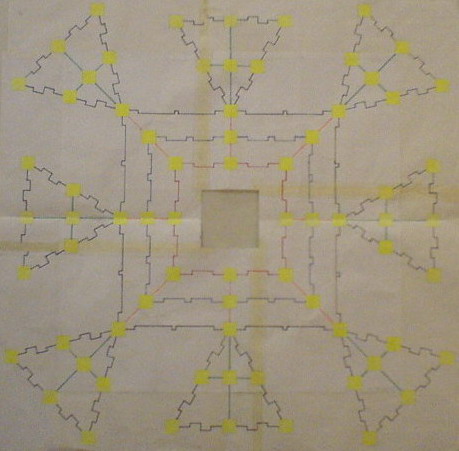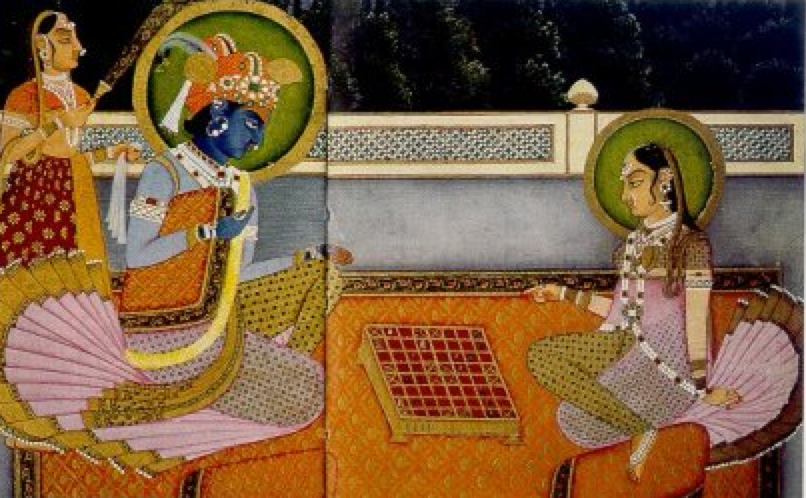The article below is written by Antonio Panaino and originally posted in the CAIS website hosted by Shapour Suren-Pahlav in London, England. Readers are also encouraged to consult/click the link “The Sassanian Era” (or click image below …)
 =======================================================================
=======================================================================
Name of a game from the Sassanian era which has not been precisely identified. The haštpay

A conjectural drawing by Ashkan H. () of a possible configuration of the Hashtpay game-board (Source: Public Domain).
From the Xusraw ud Redag it is clear that the Sassanian haštpay was distinguished from other popular games like chess and the variety of backgammon represented by new-ardaxšî r. The haštpay could perhaps be associated, according to Semenov (pp. 16-20, 131; but see Panaino, 1999, pp. 153-56, 189), with a game-board (with three lines of eight squares) recently discovered in Paikend and with another one represented on a later Sassanian silver cup with a different but apparently comparable form.

An Indian manuscript depicting Krishna and Radha playing chaturanga on an 8×8 Ashtāpada (Source: CAIS). For more see “Chess: An Indian or Iranian invention” …
Bibliography
Jacobi, “Über zwei ältere Erwähn-ungen des Schachspiels in der Sanskrit-Litteratur,” ZDMG 50, 1896, pp. 227-33.
A. MacDonell, “The Origin and Early History of Chess,” JRAS, 1898, pp. 117-41.
Monchi-Zadeh, “Xus-rôv i Kavâtân ut Rêtak,” in Monumentum Georg Morgenstierne, vol. II. Acta Iranica 22, Leiden, 1982, pp. 47-91.
J. R. Murray, A History of Chess, Oxford 1913. Idem, A History of Board-Games other than Chess, Oxford 1952.Panaino, La novella degli Scacchi e della Tavola Reale. Un’antica fonte orientale sui due gixochi da tavoliere piuà diffusi nel mondo euroasiatico tra Tardoantico e Medioevo e sulla loro simbologia militare e astrale. Testo pahlavi, traduzione e commento al Wiz-arišn î Chatrang ud nihišn î new-ardaxšî r “La spiegazione degli scacchi e la disposizione della tavola reale,” Milano, 1999.
L. Semenov, Studien zur sogdischen Kultur an der Seidenstrasse, Wiesbaden, 1996.
Thieme, “Chess and Backgammon (Tric-Trac) in Sanskrit Literature,” in E. Bender, Indological Studies in Honor of W. Norman Brown, New Haven, 1962, pp. 204-16, reprinted in Kleine Schriften, Wiesbaden, 1984, pp. 413-25.
W. Thomas, “The Indian Game of Chess,” ZDMG, 52, 1898, pp. 271-72; 53, 1899, pp. 364-65.
M. Unvala, The Pahlavi Text “King Husrav and his Boy,” published with its Transcription, translation and copious notes, Paris, n.d.



